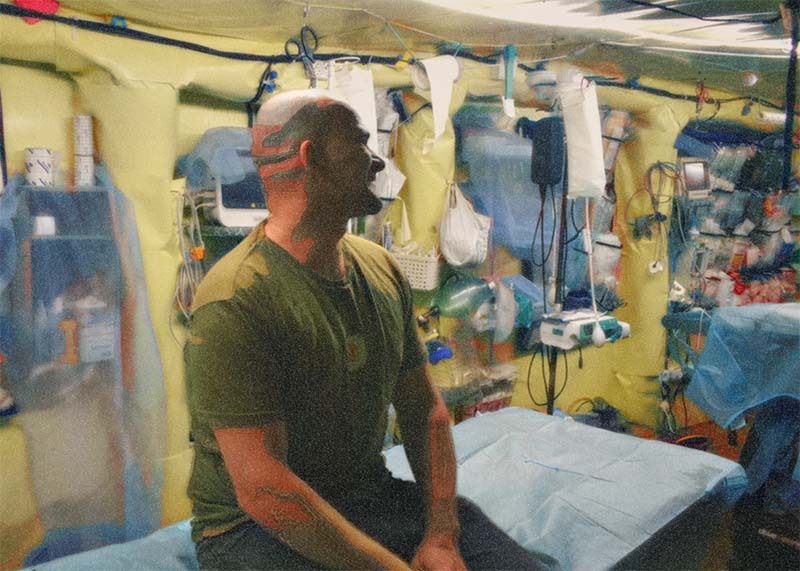
Keeping a finger on the pulse
Where do soldiers first go when they are wounded in battle? To be stabilised. In Ukraine, the so-called stabilisation points are well-known facilities on the frontline, where medics treat life-threatening injuries and prepare wounded soldiers for further medical care and transportation. Such points are crucial, dealing with all kinds of combat-related traumas.
“This is our sanctuary,” says Kostya, a surgeon from the 56th Motorised Brigade who works at one stabilisation point in Donetsk oblast. The exact location has to stay hidden so the Russian army doesn't know where to strike. Kostya is calm and reassuring as he shows me the compact underground facility and the recovery area, built by him and his comrades.
Every corner makes sense: the walls in the main operational room are covered in organisers containing a variety of medical supplies; three beds dedicated to treating the moderately and severely wounded are surrounded by devices for measuring blood pressure and pulse and stabilising oxygen levels in the blood. Shelves in the storage rooms are filled with boxes of supplies and cooled blood, as well as mannequins for practice.
The MARCH protocol – used to manage massive bleeding, lung function, combat shock, and other critical wounds – is also the basis for each table's setup, Kostya explains, pointing to one of the walls. ”We have foreign medics and foreign volunteers, some of whom know the MARCH protocol but do not have a medical degree. Anyone who knows the MARCH protocol and can assist with the mass admission of injured people can come and work with this organiser.”
Kostya’s colleague, Anastasia, with the call sign ‘Capybara’, shows me her extraordinary collection of capybara toys in the break room, which serves as a stress reliever for everyone there. Anastasia is in her mid-twenties and has eight years of experience in the field.
“Sometimes we're just standing and talking, and then a car arrives and unloads a certain number of wounded. With or without warning. It doesn't really matter to us because, once they arrive, everyone comes out and gets to work,” she says.
After around 20 minutes dedicated to each wounded person, they get transported to a larger hospital via bombed-out roads within reach of Russian drones.
Having made the journey to the stabilisation point and back for myself in a 4x4 with no lights to keep a low profile during the night, accompanied by an experienced press officer who was driving, I can say that this stage is far from safe as well. It requires a high level of bravery, which the Ukrainian medics demonstrate every day.